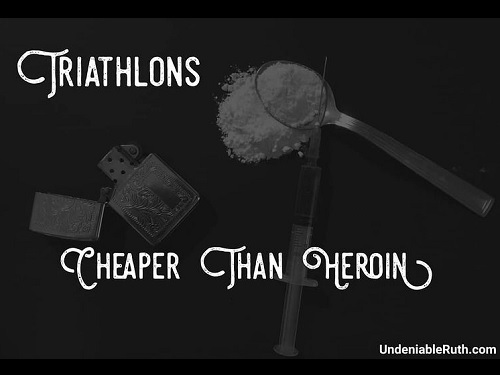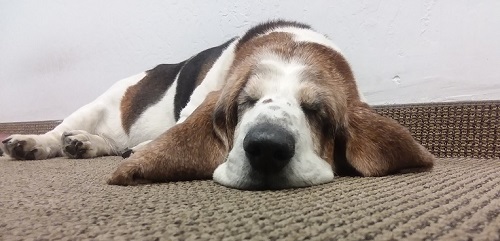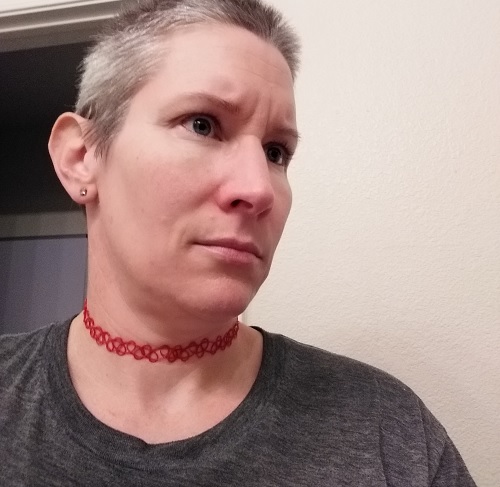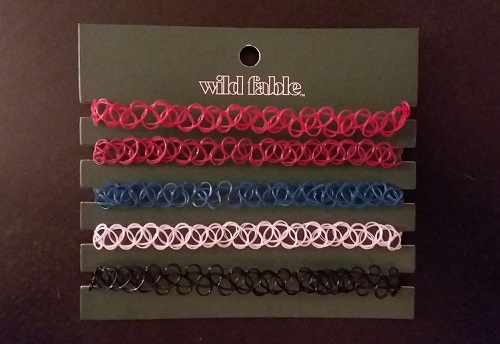I’m doing my first full Ironman race in 229 days – Ironman Mont Tremblant in Canada. I was supposed to do it last year, but the race was cancelled, and we all got deferred to this year.

What is the Ironman?
The Ironman is a triathlon, composed of the following distances:
- 2.4-mile (open water) swim, then a
- 112-mile bike, followed by a
- 26.2 (full marathon) run,
All in under 17 hours.
The race starts at 7am, and you must finish before midnight to be an official Ironman.
Why Are You Doing This?
I learned a long time ago that if I don’t have a race or other athletic event on my calendar, I will not be motivated to work out.
I enjoy the challenge of pushing myself to do something I’ve never done before. Races like this take dedication and mental toughness to get through not just race day but also the training to prepare for the race.
In 2017, I hired David Roher to help me train to complete my first marathon. During Mile 20 of the race, even though every part of my body hurt, I knew I wanted to do more marathons. I knew David did triathlons and coached triathletes, so I expanded my training in the off season to include swimming and biking as cross-training. Within months, I was signing up for my first sprint triathlon. About 30 seconds into that race, I knew triathlons were for me. I did the Half Ironman in 2019, and after that went well, I signed up for a full Ironman.
Are You Following a Program, Have a Coach, or Creating Your Own Thing?
Coach David is overseeing my training. Every Sunday, I get a text from him with my workouts for the week. Most weeks, I have two swim workouts, two bike workouts (one on the stationary trainer, one outside), two run workouts, and a rest day. I also have strength work that I do three times a week and stretches that I do every day.
In addition to this, I also go to physical therapy once a week. I’ve been having long-term issues with my hips and back. My physical therapist is also an Ironman, which is helpful, because she has a greater understanding of my goals as well.
How Many Hours Are You Spending Training, Prepping, and Planning?
Oh geez. Right now, my shortest cardio workout is about 28 minutes (1,500-yard swim), and my longest is about 3 hours (48-mile bike ride). My strength workout is probably around an hour each time. Stretching takes around 30 minutes each day. A physical therapy session can last over 2 hours with all my exercises.
In addition to all of this, there are other activities like checking on airline ticket prices for the race, bike maintenance, and replacing gear when it wears out like running shoes, workout clothes, and swim goggles.
In terms of diet, I mostly try to eat healthy, avoid excessive sugar, salt, and white flour. I also try to make sure I have enough protein in my diet, which might require more planning since I’m vegan.
What Will be the Longest Training Workout/Brick in Your Ramp Up?
That will be up to Coach David. In passing, he’s mentioned a 50-miles bike ride/5-mile run and a 100-mile bike ride/3.1-mile run.
I’m also planning to fly back East to do a 3.1-mile open water swim with my coach and the rest of the “Jewish Swim Club†in the Atlantic Ocean. During the race, I’ll be able to remind myself that swimming 2.4 miles is easier than swimming a 5k.
What Are You Most Looking Forward to Related to This Race?
So much. I’m excited to be an athlete who is capable of completing an Ironman race. Every time I can go faster, go farther, or see more muscle developing, it’s exciting.
What’s especially exciting about this race is the fact that I’ll be doing it with my coach and almost all of his other triathletes. There’s a strong sense of family and camaraderie in this group.
What Are You Least Looking Forward To?
My race is in August in Canada, but most of my training will be in Arizona. My longest workouts will be in June and July, when the low for the day can be in the high 80s. We’ll have to be careful to make sure I don’t overheat. On my long workout days, I may have to start at 2am or 3am to beat the heat.
Are You Practicing Peeing on the Bike or While Running?
To date, I haven’t needed to use the bathroom during a race. I’ve heard this is a thing. I even heard from another triathlete who was peed on by another racer while they were both on bikes. That must have happened while one was passing the other, because Ironman has strict rules about maintaining a minimum distance from other cyclists unless you’re passing.
Are You Going to Get the Tattoo?
Oh yes! I’m looking forward to getting the classic “M-Dot†tattoo.




